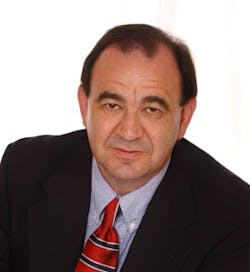For a generation, Tulsa voters have extended what is known locally as the ‘third penny’ sales tax. Tulsa Transit has been a direct, capital beneficiary on several occasions.
Nov. 12’s 70 percent voter sanction will boost Tulsa Transit by $29 million. This gain went beyond buses and established the state’s first Bus Rapid Transit (BRT) route funding.
Combined with the Oklahoma City streetcar initiative received favorably at the polls in December 2009, the Tulsa BRT route is the second Oklahoma public transit watershed moment in the last four years.
In a small state like Oklahoma, transit progress in the major metros reverberates throughout the other 32 small urban, rural and tribal transit systems. It is only a matter of time until other key, regional cities follow suit.
With $15 million, the Peoria Avenue BRT route will connect the city’s busiest street to downtown. This includes the necessary the interactive technology allowing the BRT route driver to manipulate traffic signals and regain lost time. The remaining $14 million will replace 33 fixed route and 39 LIFT program buses.
There are similarities in the OKC and Tulsa special projects.
Both the BRT and streetcar stem from an ongoing capital improvements program elongating an already existing sales tax. Both cases reveal a citizen trend favoring special transit project funding over routine operations. Neither addressed a pressing transit need.
That is where the similarity ends. The two were achieved in drastically different environments.
In 2009, a proposed five-mile, downtown streetcar provided the coattails necessary to pass MAPS 3 program. By comparison, bats enjoyed more sunlight during the Tulsa campaign than transit ballot items.
The MAPS 3 eight projects were an olio and lacked the shine from the first two MAPS votes in 1992 and 2001. The first MAPS initiative received universal praise for paving the road to "major league city" status when the NBA Thunder arrived in 2008.
The streetcar stemmed from numerous neighborhood hearings intended to assemble a winning MAPS 3 catalogue. Most transit professionals, supporters and riders preferred increased route frequency and longer weekend service hours with new money. In nearly every hearing, the streetcar idea elicited oohs and aahs; extended service produced a yawn.
One poll after another during the campaign showed the streetcar twice as popular as any other MAPS 3 project. The MAPS brand is about sizzle and the streetcar was the frying pan bacon. The turnout set an Oklahoma municipal election record – over 74,000 – and yes tallies hit 54 percent..
The Tulsa verse this week was a familiar refrain: transit buses part of a capital mélange ranging from police cars and fire trucks to computers. Transit earmarks are at best a footnote in the campaign efforts.
In this cycle, neither transit bus capital nor the BRT route received any significant discussion in the media or coffee shops. And this was not only due to a long, bitter mayoral race which sucked all the political oxygen from the room.
Consider: The ‘Improve Our Tulsa’ group focused exclusively on passing two capital improvement measures. Proposition 2 included the $29 million transit monies within the overall $563.7 million. On the ‘Improve Our Tulsa’ website the word ‘transit’ is found once. A bit more data is mined when you clicked a link showing the inventory list.
No one argues the strategy. The mayoral campaign pitted an incumbent against his predecessor. The ensuing contentious tone could have turned off voters to the propositions. Emphasizing the slew of neighborhood street and bridge improvements, you could dang near touch nearly every resident directly.
For transit, this is a drawback. With transit as the haystack needle, there is no impetus for dialogue on current or future transit service. When the discourse allows the transit message an opportunity, there is an uptick in support. You reach those less visible yet highly influential citizens who often steer the city ship.
However achieved, the Prop 2 transit dollars are welcome, appreciated, deserved and embraced by Tulsa Transit officials.
Like Oklahoma City, those closest to Tulsa Transit might not have tabbed a BRT route as the number one priority. If past is prologue, Tulsa Transit will, in all likelihood, reap benefits from this special project.
The streetcar spotlight which shone upon transit is paying dividends in Oklahoma City. This year, city council sent METRO Transit an additional $1 million. The directive is to increase current route frequency. This will be critical if the streetcar is to meet and exceed expectations.
Take away the streetcar momentum (the city council recently designated the route) and the more frequent service would not have been realized.
In Tulsa, it may take a bit longer since no real interaction accompanied this recent advancement.
Tulsa may not have a MAPS brand, but, Tulsa Transit will wield its own magic. The first time a bus operator uses BRT technology and flips a traffic light green, a real dialogue will begin. Riders will arrive and tell their co-workers “How cool was that?”.
Stephen F. Lalli is owner and principal of Carovilli Communications, an Oklahoma City public relations management firm. OTA was his first client. He has managed and served as OTA executive director since January 1, 1992, his first day in business.
